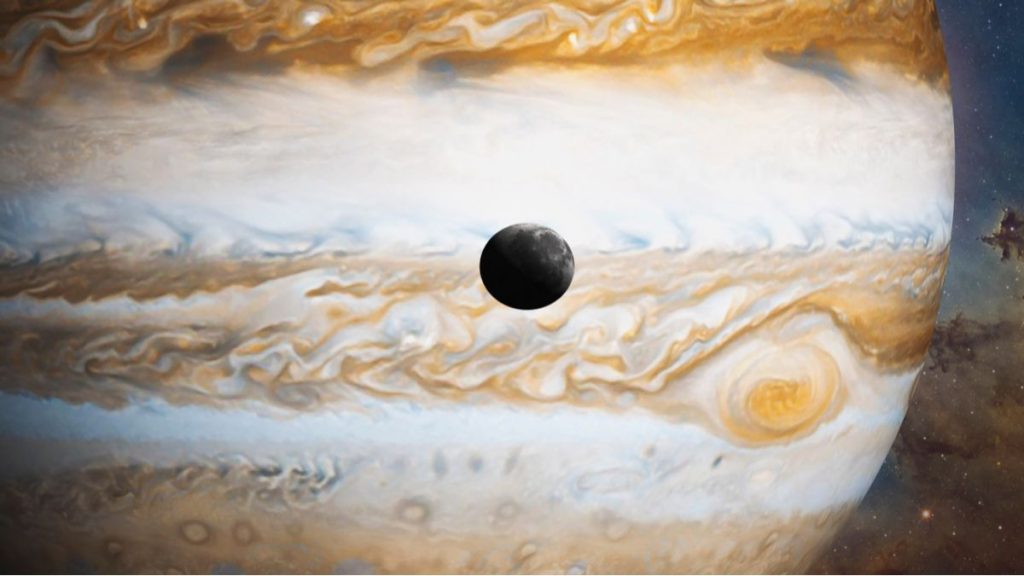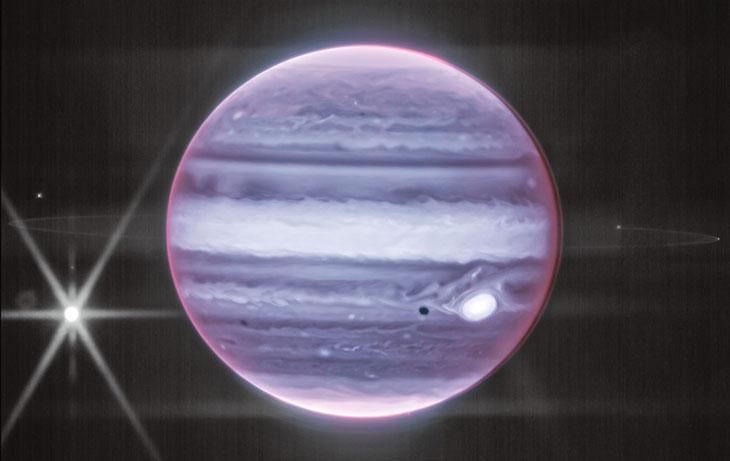Recent computer simulations have revealed that Jupiter’s massive moons are largely responsible for the lack of giant rings around the gas giant, the largest planet in the Solar System.
A noticeable absence
Significantly more massive than Saturn, Jupiter should logically have larger and more spectacular rings. Nevertheless, it is not the case. To unravel this mystery, and also to determine if the planet once had them and had somehow lost them, researchers at the University of California used a dynamic computer model taking into account the orbits of Jupiter and its four main moons, as well as different variables known to influence the formation of planetary rings.
” If Jupiter had them, they would appear much brighter than those of Saturn, due to its closer proximity to our planet. “, emphasizes Stephen Kane, lead author of the study, published in the journal Planetary Science.
Saturn’s famous rings are largely made of ice, which could come from comets. However, if a planet’s moons turn out to be large enough, as is the case for Jupiter, their gravity can throw that material out of the planet’s orbit, or alter the orbit of the ice so that it collides with its natural satellites.

” We found that Jupiter’s Galilean moons, one of which happens to be the largest in our Solar System, would very quickly destroy any giant ring that might form says Kane. ” Massive planets possessing massive moons, it is unlikely that Jupiter could once have had such structures.. »
Valuable information about the past of the planets
All four giant planets in our solar system (Saturn, Uranus, Neptune, and even Jupiter) happen to have rings. However, in the case of the latter two, they turn out to be so faint that they were simply impossible to image with traditional astronomical instruments. This was recently achieved by the powerful James-Webb space telescope (image visible below).
Majestic structures, rings can tell scientists about a planet’s past. Based on their shape, size and composition, they can in particular deduce the type of event that formed them, as well as their possible collisions with other celestial bodies.
” To us astronomers, they are like blood splatters on the walls of a crime scene. Rings of giant planets indicate something catastrophic has happened Kane concludes.

[related_posts_by_tax taxonomies=”post_tag”]
The post Mystery of Jupiter’s ‘missing’ rings finally solved appeared first on Gamingsym.

